The ultra-portable segment of the audiophile market amazes me more and more with each new product release. The latest surprising product I’ve tried is the Shanling UA2, a larger and more powerful version of the UA1. Aimed at being the audio companion of your smartphone, tablet, PC, or even game console, the UA2 has a very decent power output while being smaller than my thumb. This Lilliputian-sized device surely has a lot to offer.
Disclaimer: the UA2 was sent to me free of charge by Frankie at Shanling. It retails for $85. Additional info is available on the official product page.
TL;DR: recap
| Pros |
Cons |
| + Very compact and well-built design
+ Balanced output + Nintendo Switch mode + Support for extreme-hi-res formats + High power output |
– Weird volume behaviour under Linux |
Rating: 9.5/10
Packaging & Accessories
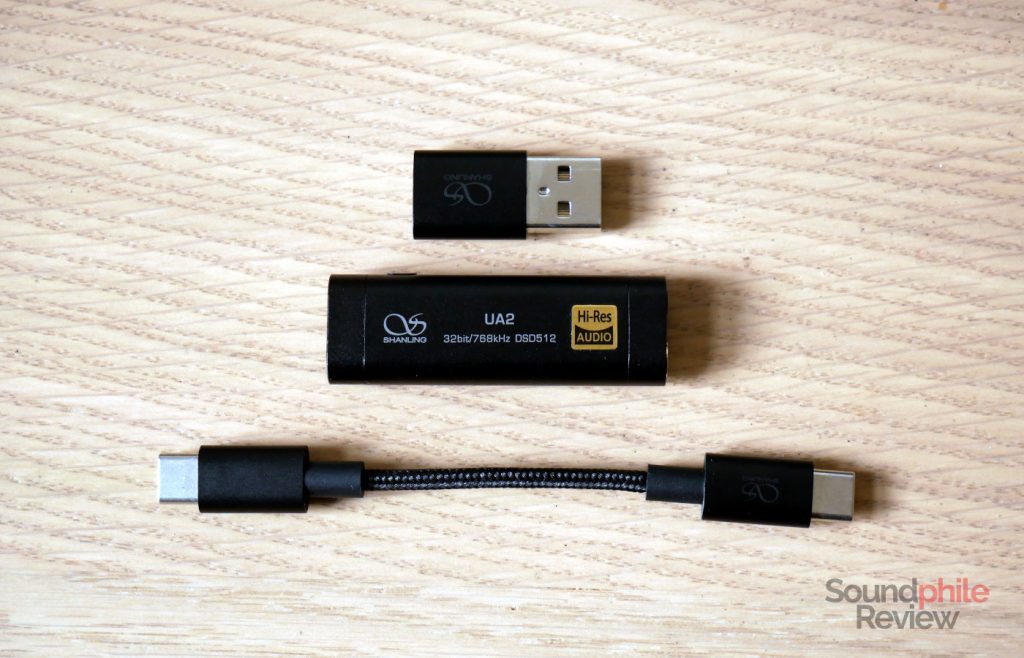
Shanling kept things simple with the UA2: inside the package you can find the device itself, a ~10 cm USB-C to USB-C cable and a small USB-C to USB-A adapter, so that you can use the device with computers or other devices with a USB-A output port. Although there’s already one factory-applied on the device, the package contains two additional Hi-Res Audio stickers.
Design & Build
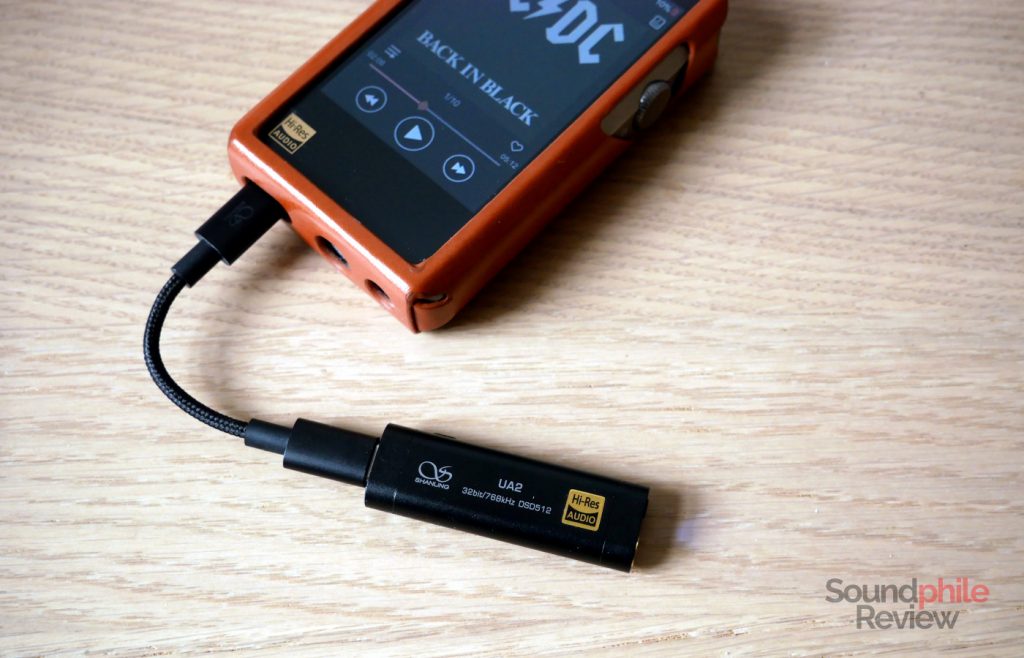
The Shanling UA2 sits firmly in the realm of DAC/amps made for phones and other similarly portable devices from a design perspective: it’s basically a small slab of metal with rounded edges and connectors on the two smaller sides. The only distinctive element is the writing on one side, with faint white lettering informing you that this is the Shanling UA2 and that it is capable of reproducing hi-res music (the lettering is actually more subdued in person than in the pictures, for some reason).
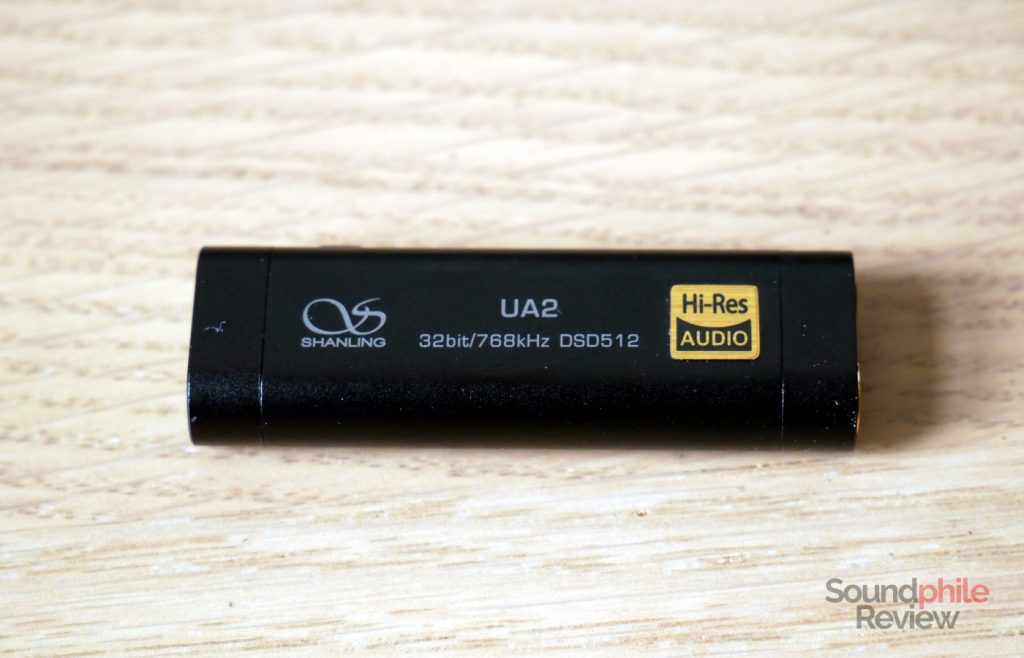
Contrary to the UA1, the Shanling UA2 has a removable cable. This has the great advantage of letting you choose the cable you prefer or need: the one included in the box is of high quality, but you may want to use a USB-A to USB-C cable, or one that is Lightning to USB-C in case you want to use the UA2 with an iPhone. This also has an effect on the design: the Shanling UA2 is small and flat, with round edges that make sure it won’t scratch your precious devices (or tear a hole in your pockets, for that matter). The only peculiarity is the “mode” button on one side that switches between the “normal” mode and the Nintendo Switch mode.
There are two jack connectors: one is 3.5 mm and supports unbalanced devices (although it does support headphones with a microphone and a TRRS jack), the other one is 2.5 mm for balanced headphones. There is a status LED between the jack connectors that lights up in various colours to inform you of the type of stream being played (e.g. DSD64, 44.1 kHz PCM, etc).
Shanling buit the UA2 entirely out of metal, with no plastic in sight: even the cable housings are made of metal. This bestows upon the device a feel of durability and quality that no plastic can give.
Features & Specs
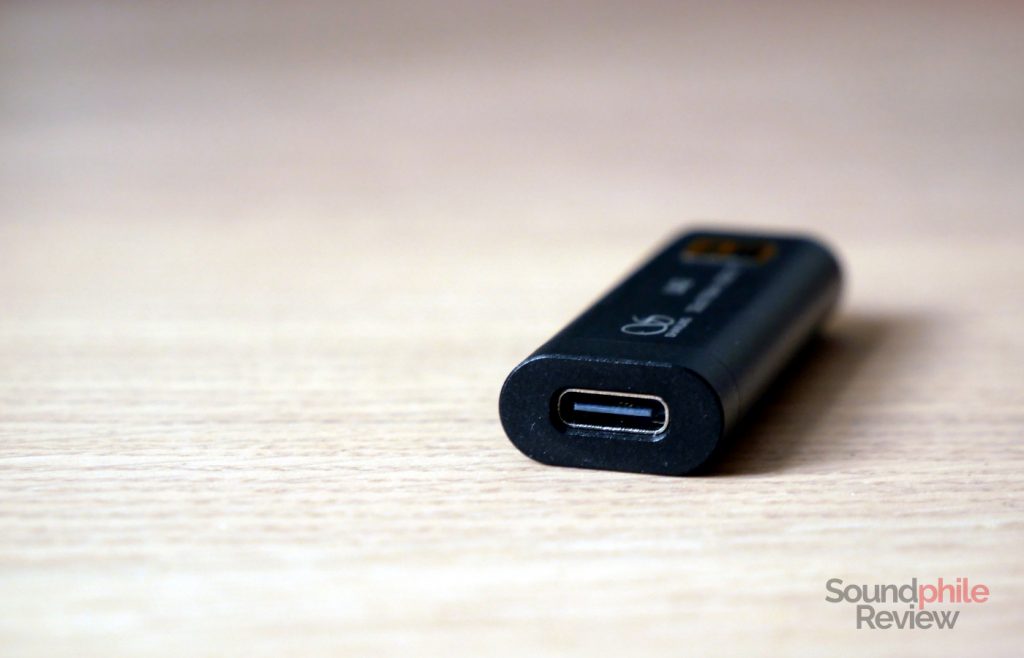
The Shanling UA2 comes with a special Nintendo Switch mode: as many people want an audio device able to drive their headphones while using the portable console, more and more manufacturers of audio gear are turning to this market. The UA2 is actually the first device with such a mode that I happen to see; it basically switches to the older USB Audio Class 1.0 protocol, so it’s still fully compatible with computers and smartphones, but it’s limited to CD-quality audio (16 bit, 44.1/48 kHz).
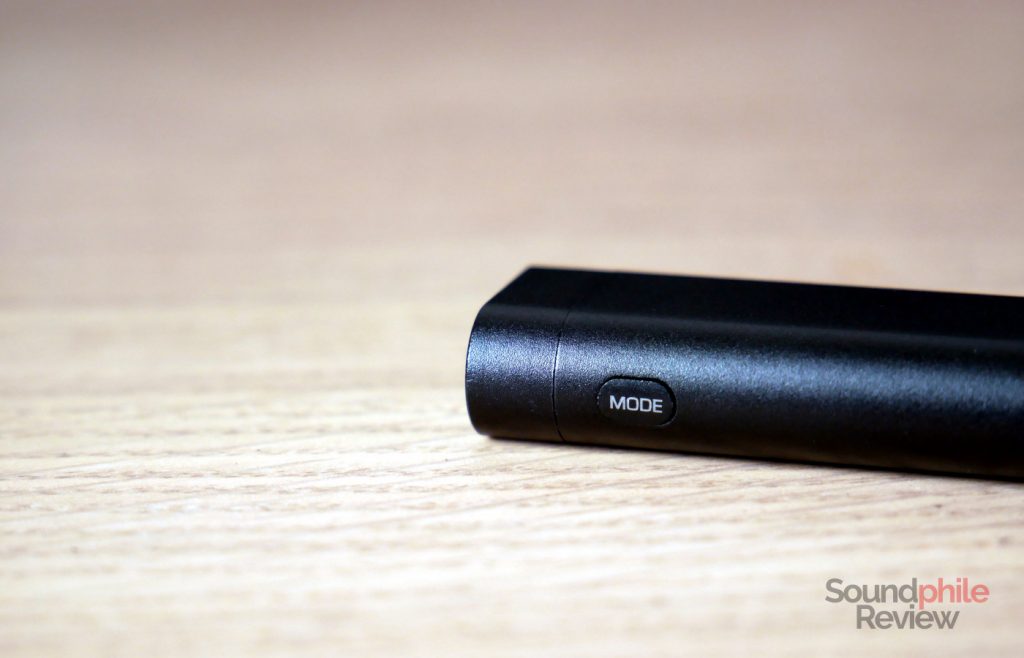
Speaking of compatibility, the Shanling UA2 runs fine with practically every operating system out there. The only issue I can report is that the volume seems to do some random things under Linux: it starts playing sounds around 10%, but then it reaches maximum output around 20% and goes back to no volume right after that. I found this out the hard way, as I lowered the volume from the default 100% to the usual 10-15%… only to find my ears blown out by the terribly high volume.
Shanling UA2 |
| Input | USB (up to 32 bit / 768 kHz PCM/DXD, DSD512) |
| Suitable headphones impedance | N/A |
| Output impedance | 0.8 Ω (single-ended) 1.6 Ω (balanced) |
| Maximum output power | 125 mW (32 Ω, single-ended) 195 mW (32 Ω, balanced) |
| Frequency response | 20 – 50,000 Hz (- 0.5 dB) |
| THD+N (@1 kHz) | 0.0008% |
| SNR | 121 dB (single-ended) 116 dB (balanced) |
| Crosstalk | 76 dB (single-ended) 120 dB (balanced) |
Shanling does not indicate what headphones are suitable for use, but the relatively low power output (in the grand scheme of things) means you won’t be able to power 600 Ω headphones to deafening levels. Still, on a more relative level, the power output is quite large for a device this small and this allows you to drive most headphones without issues: to put things more into perspective, the UA2 has a power output that’s close to the M2X. Shanling opted or an ESS Sabre ES9038Q2M DAC and a Ricore RT6863 amplifier. The latter chip is quite hard to find online and there’s little information available on it. It appears to be used in the very well-reviewed Khadas Tone Board, but there’s not much else and I find it amusing that it’s even unclear where the company hails from, though there are strong clues they’re Chinese (though it doesn’t really matter, to be honest). It seems like the UA2 is the one product that has popularised this chip, though, as almost every single result on Google points to the UA2.
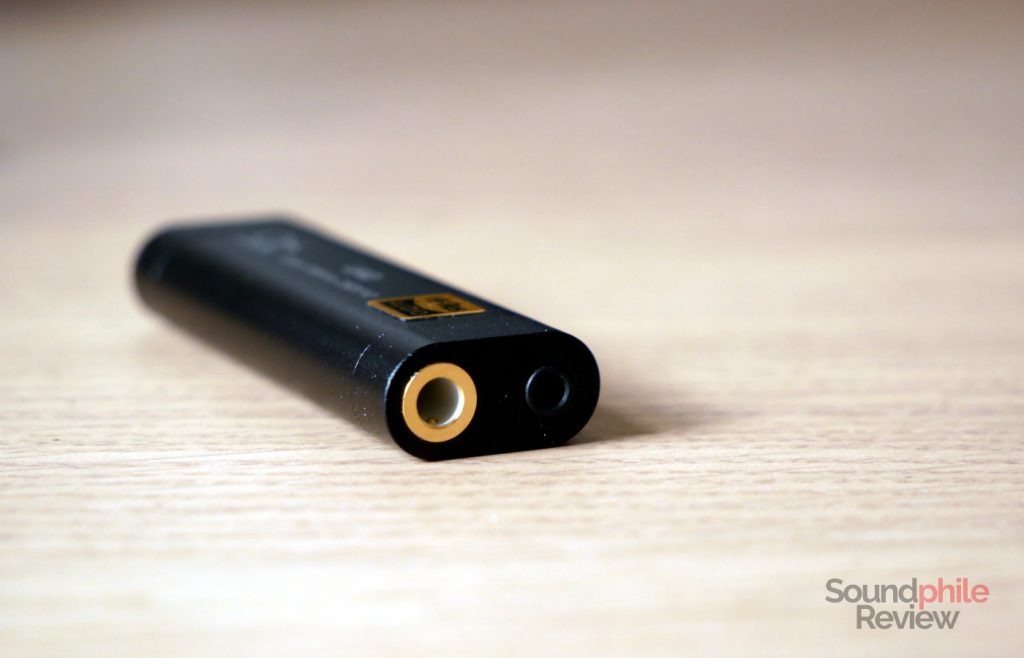
One thing I really like about the Shanling UA2 is its compatibility with most formats out there: not only does it support extreme high-res PCM, but also DSD512, so you can make the most of your music collection without requiring an external device. The only format that’s not supported is MQA, but that’s hardly a huge issue.
I also really appreciate the presence of the balanced output: although it does not bring any difference in sound quality, it does offer you the ability to use headphones with a 2.5 mm jack and to have more power available, both of which are quite useful features.
Software
Shanling introduced the new Eddict Player with the launch of the UA2. Although the name appears to be a weird combination of “addict” and “edict” (an addict to edicts? an edict for addicts?), the app is actually quite fine. The app is only available for Android, I guess due to limitations in iOS. It allows you to play music and also set a few different things on the UA2, including equalisation (through a 5-band equaliser), gain (high/low) and volume.
Sound
I tested the Shanling UA2 using various headphones, including the HiFiMAN Ananda, the Shanling ME80 and the Sennheiser HD 6XX.
Although it is powered directly through the noisy USB interface, the UA2 is actually quite notably devoid of any background hiss, hum or other form of background noise, leaving only music to the listener.
As far as sound is concerned, I find the Shanling UA2 to be quite flexible as it can drive most headphones to their best, whatever their sound signature is. That’s because it’s (almost?) perfectly neutral in its frequency response, so it can actually pair up with practically anything without letting its own signature get in the way. It pairs well with both the bright Ananda and the warm 99 Classics. I can’t hear any discernible difference between this unit and other sources.
I can’t hear any difference whatsoever between the single-ended and the balanced connectors; in fact they both sound the same. The only major difference is the larger power output of the balanced connector: in this case you might hear a difference when using high-impedance dynamic headphones, as the larger power output can probably better compensate the fluctuations in the impedance of the headphones, therefore making them sound better (or, more appropriately, closer to their real signature).
Final Thoughts
The Shanling UA2 is among the few portable DAC/amps to feature a dedicated amplifier stage and a balanced output together with a single-ended one. This makes it quite versatile and useful, and even more so once we factor in the compatibility with practically every hi-res format out there including the DSD512, once domain of hi-end, bulky desktop devices. But we’re in the era of portable things and the Shanling UA2 is a masterful example of how much things have progressed on this front, with enough power output to drive most headphones and a flexibility that’s second to no-one. This could easily be the one and only DAC for most people as it covers all the bases from desktop to ultra-portable. Shanling really shows what can be achieved with modern technology and goes on to prove once and for all that it’s not about how big your DAC is, but how well you design it.

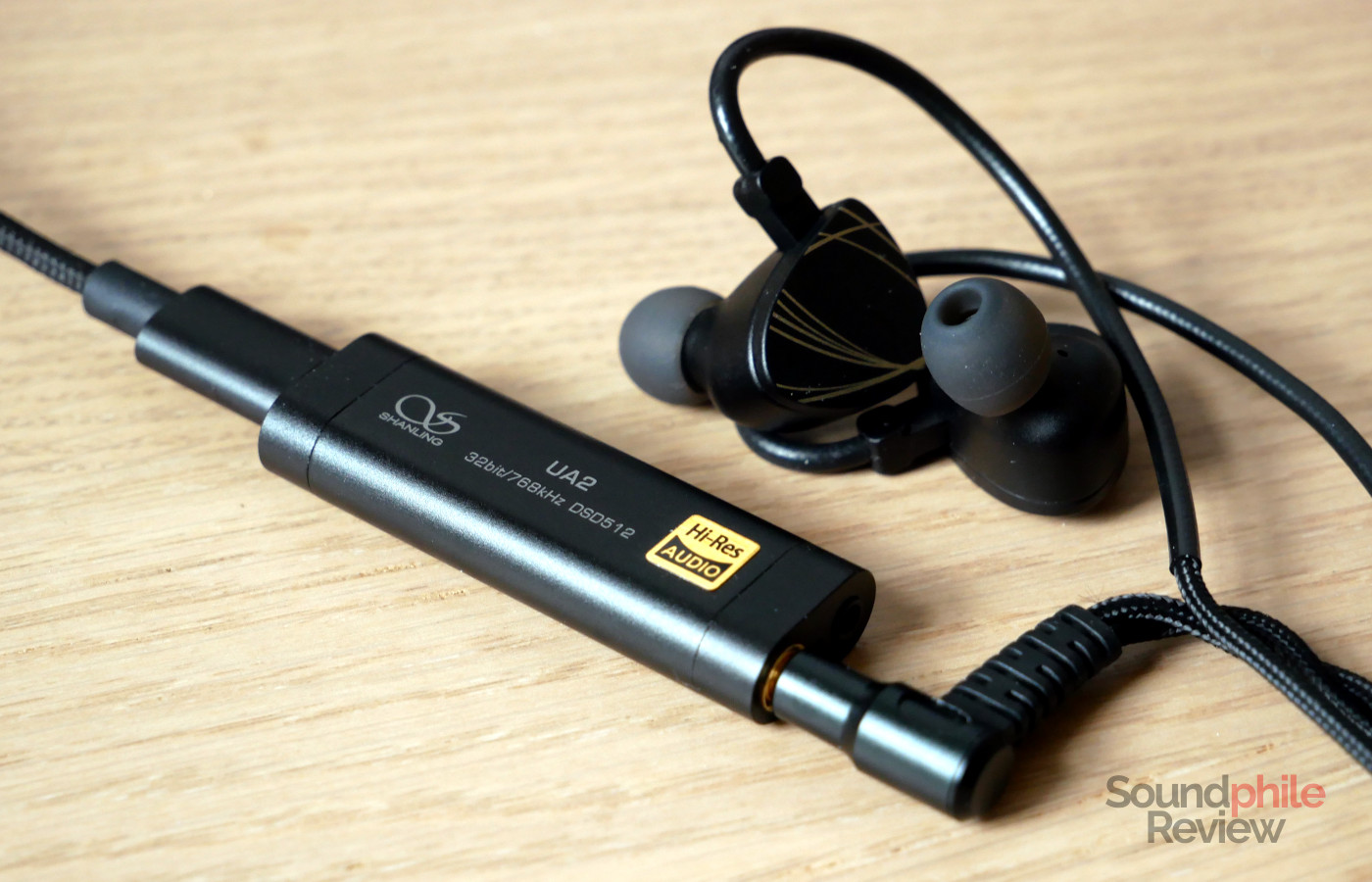


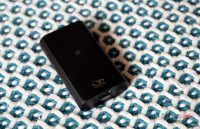
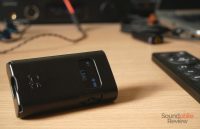
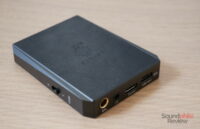


Does edict app only adjusts volume on shanling app only? How can I adjust volume on Apple music?do I need to change it with my phone’s volume button only or I need to open up edict app?
It is a global volume setting. I don’t use Apple Music, though, so I can’t comment on that specific app.
How much is Shanling UA2 drain the battery life if It’s paired with the phone?
Hello! I haven’t run any specific tests, but I would say that it is relatively significant – compared to playing music without the UA2, my sensation is that the battery runs for ~10% less time. I can run more thorough tests if you wish.
UA2 doesn’t supper IPhone. I bought a high quality Apple certified lighting to type C cable connecting iPhone directly to UA2. It does transfer any data to UA2 (cable has not quality issue). I learned from reviews and Shanling website that the benefit of interchangeable (removable) cable with UA2 is perfect for iPhone users for but he reality it is not the case. Anyone know the reason? Thanks
You need to buy special connector that suports OTG.
Apple default cables don’t.
Use usb to lightning otg or adapter
Does this improve the sound quality of Moondrop Aria over pc/mobile
Short answer: no. Long answer: you probably won’t hear any differences as the Aria is very easy to drive, unless you have an incredibly bad PC or phone.
Good review.what about bluetooth functionality? Can l play music through Bluetooth and use codec like LDAC ect. and how?
Hi! It’s not mentioned anywhere because there’s no Bluetooth, this is strictly cable only.
Excuse me, may I ask you a question? Should I need to install the appropriate driver from the website for my shanling UA2 before using it? (my laptop is msi gf63-9sc with windows 10) Or is it okay to just plug it directly without downloading those driver?
Thanks in advance
oh and I also using shanling me80
Hello Ammar,
If you are using Windows 10, you shouldn’t need any driver to use the UA2.
Yes you need driver,for ASIO.
Shangling UA2 vs HiBy Fc3 vs Hidiz S9Pro vs
Shangling UP4 vs Fiio Q1 Mark II ? What is better?
I’ve only tested the UA2 and the UP4, I don’t know about the others. In any case, they’re all quite different, so it really depends on what you need. There’s no absolute “better”.
Hello. I also use LInux, Manjaro. Now I just received both Shaling UA1 PRO and UA2 . Also had the UA1 normal. I’ve tested the three of them and yeah, the volume behaves weird. AT LEAST with the UA1 Pro If I just go with 5 percent of volume level and I don’t raise it up, it would work ok.
Any updates on that? Cuz on Windows it works OK, although Windows sucks so I don’t use that, and I’m too poor to have a Mac.
Hello Luana,
Unfortunately I don’t have any updates. We’ll have to wait for the 5.15 kernel to release to see if there’s any change.
Actually after some ear bleeding (joke), I found out that with Alsa and Audacious, after 50 of volume it just works normally with UA2. My Kernel es 5.13 btw.
Is this device support earphone with mic? Are there any specific earphone model only? (i tried it with my earphone and the mic doesn’t working)
I use Fiio fa9 with my iphone through apple dong. Can the Shanling ua2 produce a real difference in terms of sound quality?
Short answer: no.
Long answer: no.
Thank you. You saved me 100 euro’s. There were other people praising the shanling ua2 performances.
Don’t get me wrong: it’s a great little device and I honestly love it. But when it comes to sound quality for a low-impedance IEM, then you’re realistically not going to hear any differences compared to the Apple dongle (which, by the way, is great for its cost!). The situation would be different if you were using a high-impedance dynamic headphone, as that would need a lot of power that the Apple dongle can’t provide while the UA2 actually can – so you probably would indeed hear a difference there.
I’m still very new to this and the first IEM I buy is the fiio fa9 lol. It does have the impedance of 16-32 ohm. So techincally speaking, easy to drive. However I was more interested if the soundquality difference would be noticeable. Would the dac give you a more clean sound than say the Iphone through the apple dongle. Just to clarify, the sound I’m getting from the Fa9 is much better than I got from the bose qc 35 ii and I was even impressed that the sony mx4 and the Airpod Max was either on par or slightly less than the fa9. Maybe I should just enjoy the damn thing as it is, but then again; what if I can get an even nicer sounds and hear truly what the artist intended me to hear. Would like to hear your take on this and thanks for replying!
Does it’ll improve sound quality output of Blon bl-03.
Thanks
Short answer: no. Long answer: no, but if you hear buzzing, humming or other noises it may make them go away.
Hi!
On my Pocophone X3 I have the 3,5mm as audio output. If I connect the dongle to the USB-c, will I be able to ear sound?
Can you suggest other dongle that could fit with my telephone?
Hello! You should check if the Pocophone X3 has USB audio output, but I see no reason why it shouldn’t. You could check other dongles here: https://www.soundphilereview.com/tag/mobile-dac/